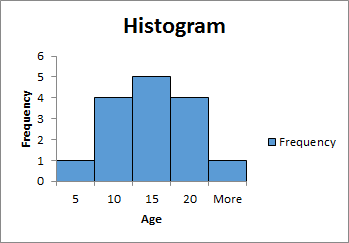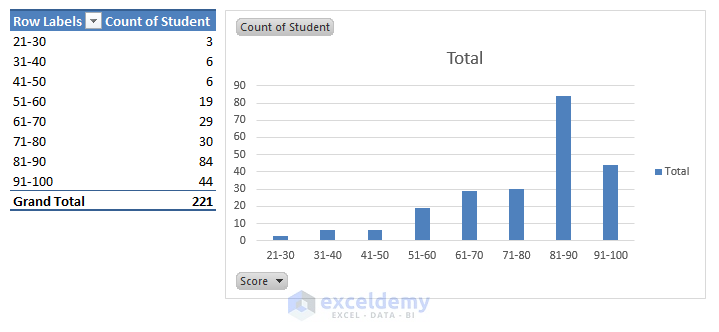
Select the range G5:G8 (all four cells).ģ.MA110 || Frequency Distributions (Ungrouped Data) || Video 2-1 How To Draw A Frequency Polygon Making a Frequency Distribution Table - #Statistics | CSE and UPCAT Review Constructing Frequency Distribution Table Frequency Table, Tally, Midpoint, Relative Frequency and Cumulative Frequency How to construct a grouped frequency distribution How to Make Frequency Table, Histogram, Polygon and Ogive Detailed Frequency Distribution Statistics Lecture 2.

Delete existing formulas if needed (see note below).Ģ. To enter the FREQUENCY formula, follow these steps in the attached workbook.ġ. FREQUENCY will also return an "overflow count" – the count of values greater than the last bin. In other words, each bin will include a count of scores up to and including the bin value.

The range F5:F8 is the named range "bins". FREQUENCY will treat each bin value as the upper limit for that bin. In the example shown, we have a list of 12 scores in the named range "data" (C5:C16). On the other hand, once you set up your bins correctly, FREQUENCY will give you all counts at once! Setup and formula The frequency formula counts the values in a range of cells or array that fall within a range or bin in excel. The FREQUENCY function returns a frequency distribution, which is a summary table that shows the count of each value in a range by "bin". FREQUENCY is a bit tricky to use, because must be entered as an array formula. A frequency distribution is a summary of counting how often values occur within a range of values, take the following screenshot for example, column B contains the score numbers, D2:E6 is the score bands you specified by yourself, and the Frequency column get the value occurs based on the bands. The frequency formula calculates or determines the supplied vertical array’s frequency distribution based on the Bins or intervals that we supply. Because FREQUENCY is a formula, the results and chart will dynamically update if data changes. Did you know that you can use pivot tables to easily create a frequency distribution in Excel You can also use the Analysis Toolpak to create a histogram. It is the series in which data are presented in a way that exact measurement of units of the items or terms are shown clearly. The example on this page shows one way to create your own histogram data with the FREQUENCY function and use a regular column chart to plot the results. ADVERTISEMENTS: It is series that deals with discrete variables.

A frequency distribution is a representation (such as a table) that gives the frequencies of the set of data values being examined. For instance, if 10 students scored an A, 30 students scored a B and five. Note: later versions of Excel include a native histogram chart, which is easy to create, but not as flexible to format. Frequency is the number of times a data value occurs. Grouped frequency distribution charts let statisticians organize large sets of data in a format that is easy to comprehend.


 0 kommentar(er)
0 kommentar(er)
